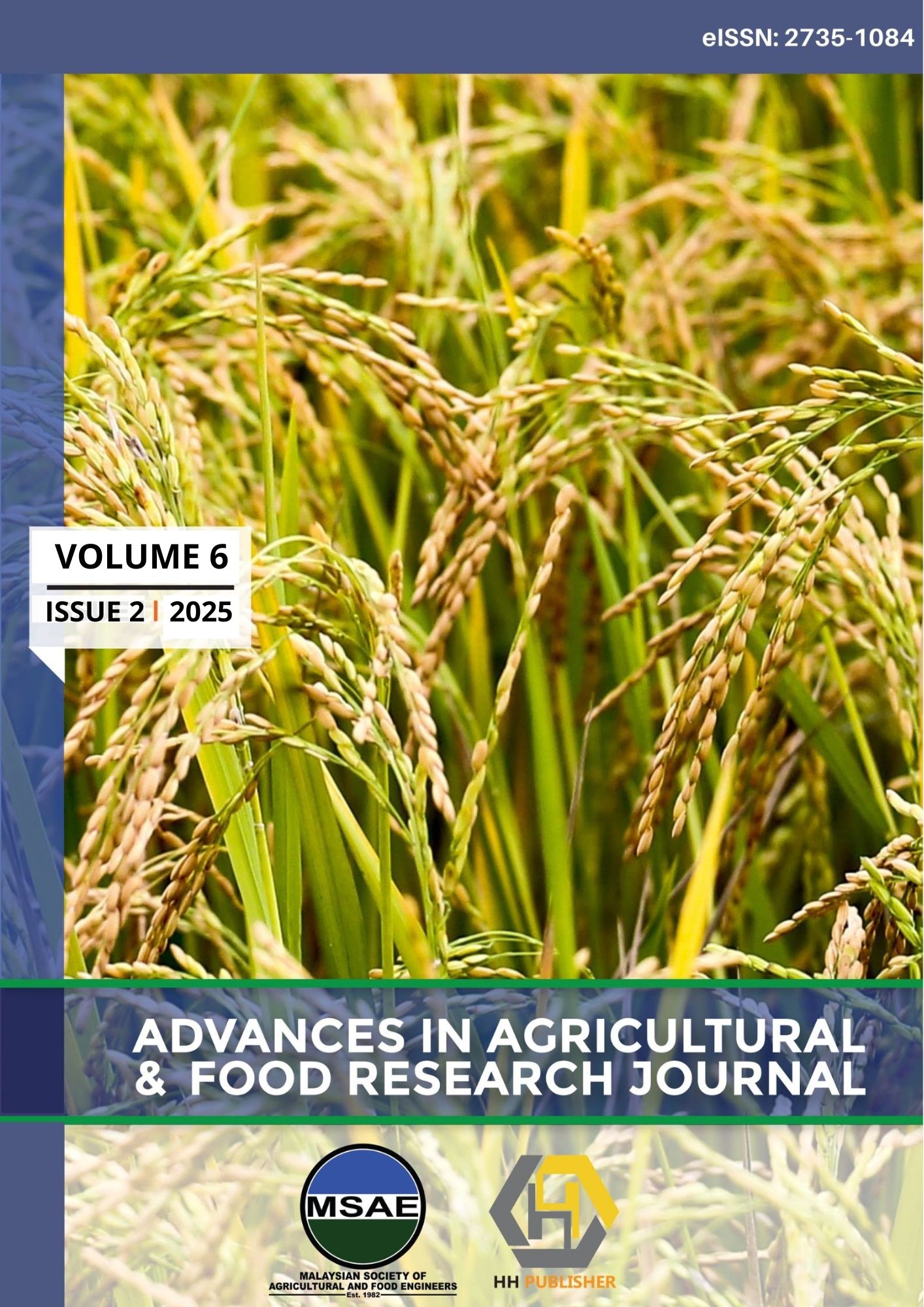Efficiency of Typha angustifolia in Phytoremediation of Palm Oil Mill Effluent
DOI:
https://doi.org/10.36877/aafrj.a0000570Abstract
This study aims to investigate the potential of Typha angustifolia as a vegetation or macrophyte for palm oil mill effluent (POME) phytoremediation to reduce the contaminants before being discharged to receiving water bodies. The raw POME was diluted to 25% and 50% to ensure the growth of the plants. The experiments were conducted for 12 days and repeated three times. The 25% diluted POME systems showed the highest removal of chemical oxygen demand (COD), total suspended solids (TSS), ammoniacal nitrogen, and zinc, with average removal efficiencies of 65.5%, 59.9%, 82.2%, and 67.5%, respectively. Therefore, T. angustifolia has demonstrated its viability as a macrophyte for POME phytoremediation. Overall, the phytoremediation system was able to reduce the concentration of the pollutants in POME and safe to discharge following Malaysian POME discharge regulations.
Downloads
Published
How to Cite
Issue
Section
License
Copyright (c) 2025 Siti Kamariah Md Sa'at, Vimaladewi Aplasamy, Syafiq Aiman Shaiful Adli

This work is licensed under a Creative Commons Attribution-NonCommercial 4.0 International License.
Author(s) shall retain the copyright of their work and grant the Journal/Publisher right for the first publication with the work simultaneously licensed under:
Creative Commons Attribution-NonCommercial 4.0 International (CC BY-NC 4.0). This license allows for the copying, distribution and transmission of the work, provided the correct attribution of the original creator is stated. Adaptation and remixing are also permitted.

This broad license intends to facilitate free access to, as well as the unrestricted reuse of, original works of all types for non-commercial purposes.
The author(s) permits HH Publisher to publish this article that has not been submitted elsewhere.

.png)

.jpg)



